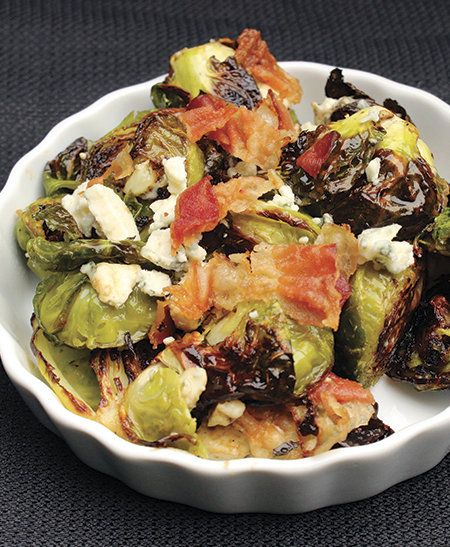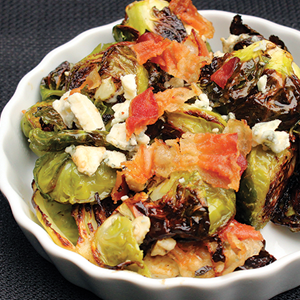Grow next fall’s decorations in your own backyard
Every fall, pumpkins and gourds fly out of fields and stores to be used as home decorations.
If you want decorations and some harvest-season satisfaction, “there are hundreds of varieties of pumpkins and gourds that can easily be grown across Virginia,” said Chris Mullins of Virginia Cooperative Extension. Seeds are available through seed catalogs and garden center stores.
Pumpkins and gourds can take up a lot of space, so before you plant, make sure they will have room to grow, Mullins said.
Surry County produce farmer Steve Berryman grows 8.5 acres of pumpkins and said they require about 25 square feet per plant.
“If you’re planting pumpkins in rows, the rows should be 5 feet apart, and the plants should be placed 5 feet apart,” Berryman said.
Pumpkins should be planted by July 1 in order to have them ready for Halloween. If you want pumpkins ready for an earlier fall display, back up the planting time to June.
“You will want to have warm, well-drained soil,” Berryman said. “You want a soil that doesn’t hold water. Pumpkins don’t like to get their feet wet.”
If the weather is particularly dry, irrigate your plants using a soaker hose or drip irrigation.”
“Try to only water underneath the pumpkin plants,” Berryman said. “The more the plants get wet, the more they will harbor disease.”
A little planning can pay off in fall colors
Planting sedum, coleus and impatiens or butterfly bushes and Rose of Sharon in bright, fall colors can add a splash of color to a sedate, pre-winter landscape, said horticulturalist Mark Viette.
He suggested placing flowers between shrubs and using different varieties of plants when designing for fall color. And he noted that some plants, like coleus and impatiens, might need some winter accommodations.
“Tender tropical annuals and perennials just cannot take the frosts we have in Virginia,” Viette said, but you can save your plants from year to year by potting them and storing them in a temperature-controlled environment.
Before frost becomes an issue, dig up the entire plant, and place it in a pot. Put pots in a crate that has holes in it, and store them in a basement or a temperature-controlled garage. They can be replanted in late June. Viette recommended planting them in groups of five for visual impact.
“These plants may not look great during the summer, but they will show up well from August into late November.”
In addition to sedum, coleus and impatiens, Viette recommends double-flower impatiens that look like roses and the blackberry lily, which has perennial seed pods that resemble blackberries.


Roasted Brussel Sprouts with bacon and blue cheese
2 pounds brussels sprouts, trimmed and cut in half
3½ tablespoons extra virgin olive oil (with ½ tablespoon reserved)
salt and freshly ground pepper to taste
1½ tablespoons balsamic vinegar (with ½ tablespoon reserved)
¼ cup cooked and crumbled bacon
2 to 3 ounces mild blue cheese, crumbled
Preheat oven to 400°. In a large pan, toss the brussels sprouts with 3 tablespoons of the olive oil, salt and pepper. Spread the sprouts in a baking pan in a single layer, and roast for about 25 minutes. Rotate the pan and toss the sprouts several times during the roasting process so they brown evenly.
During the last few minutes of roasting, add 1 tablespoon of the balsamic vinegar and toss well. Then return the sprouts to the oven for another 3 to 4 minutes.
Remove the sprouts to a large bowl, and toss again with the reserved ½ tablespoon of olive oil and ½ tablespoon balsamic and the bacon and blue cheese. Top with additional blue cheese and another sprinkle of black pepper just before serving.
Source: Kendra Bailey Morris
‘Green up’ your winter meals
A study by the National Cancer Institute and the National Center for Nutrition Policy and Promotion revealed that nearly everyone fails to meet dietary requirements. Nutritional deficiencies can wreak havoc on immune systems and organ function and can affect mood and appearance.
Greens are truly alkalizing, which is critical for our overly acidic diets. They are loaded with proteins, minerals and vitamins.
Try working these fall favorites into your diet:
- Arugula—This slightly sweet and spicy green is available year-round but is especially tasty in fall. It’s great sautéed or in salads and an excellent source of folic acid if you’re pregnant or planning on becoming pregnant.
- Brussels sprouts—Like their cousin, cabbage, these have been shown to lower risks of cancer. Try roasting them in olive oil, mineral salt and a little bit of rosemary.
- Escarole—These tender leaves are a staple in Italian white bean soup and an excellent source of vitamin A.
- Kale—There are a million ways to prepare it, all super-fast and super-delicious. All varieties are good, but definitely try the lacinato or dinosaur kale.
- Parsley—More than just a pretty garnish, it’s a powerhouse of nutrition and a natural breath freshener.
- Celery—Crunching on raw celery is a great way to chill out when stressed. It’s versatile and makes one of the best creamy soups you’ve ever tasted.
- Broccoli—From stir-fry and soups to pasta and pizza, you really can’t go wrong with broccoli. Sometimes it’s best just steamed with a little bit of salt and drizzled with olive oil.
- Chard—This broad, sweet and tasty leaf is a great one to include in your holiday menus. Try wrapping spiced apple slices in chard leaves. It’s gorgeous and delicious.
Hands-Only CPR could result in more cardiac arrest survivors
When someone experiences sudden cardiac arrest, his or her survival depends greatly on receiving immediate CPR.
Providing CPR can double or triple a person’s chance of survival; however, less than one-third of people who experience cardiac arrest at home or work or in a public location receive help.
According to the American Heart Association, some bystanders are worried about performing CPR incorrectly. Consequently, the organization introduced Hands-Only CPR to simplify the process.
While traditional CPR is still widely used and recommended, Hands-Only CPR has been proven effective in saving lives, according to the heart association.
“Studies of real emergencies that have occurred in homes, at work or in public locations show that Hands-Only CPR can be as effective as conventional CPR for a short period of time,” said Kevin Bartal, safety coordinator for Virginia Farm Bureau. Bartal also is a firefighter with the Henrico County Division of Fire.
“So if you see someone who needs help, don’t be afraid to perform CPR if you’ve been trained or if the 911 operator gives you instructions,” Bartal said. “I’d much rather see someone try to help than stand by and do nothing at all.”
The Code of Virginia protects those who are trained in CPR and who help someone in medical need. The law states that those who perform emergency care or assistance in good faith, without compensation, in emergency situations and are not negligent in their acts cannot be held liable for civil damages for acts or omissions from rendering the care.
There are two steps to the Hands-Only method:
- calling 911; and
- starting compressions by pushing hard and fast in the center of the person’s bare chest.
While the hands-only method may be easier and make people more willing to help, it is still important to receive proper CPR training and training for use of an automatic external defibrillator, or AED, Bartal said.
For more information on Hands-Only CPR, visit handsonlycpr.org.